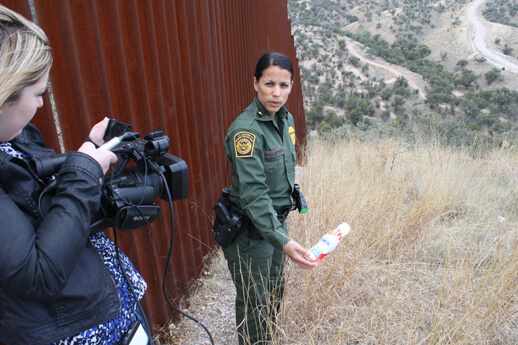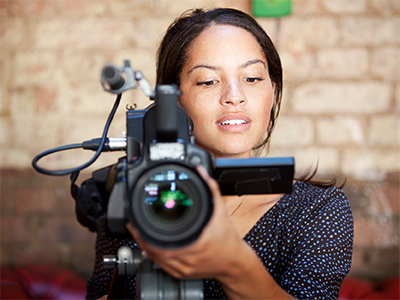How Legal Videography Improves Court Presentations and Evidence
How Legal Videography Improves Court Presentations and Evidence
Blog Article
Diving Into the Devices of Legal Videography: Introduction Its Procedure in Shielding Genuine Visual Testimony for Judicial Proceedings
In the realm of judicial proceedings, the function of lawful videography stands as a foundation in preserving and providing aesthetic evidence. As modern technology continues to breakthrough, the systems behind lawful videography have come to be increasingly complex, providing a crucial layer of authenticity to testaments captured on video.
Historic Evolution of Legal Videography
Checking out the historical development of lawful videography reveals a considerable makeover in the capturing and presentation of aesthetic proof within the legal landscape. In the past, legal procedures greatly relied upon composed photos and records to record occasions and give proof. However, with the development of video clip technology, the legal market observed a standard change in how visual statement was recorded and offered.
The evolution of legal videography can be mapped back to the late 20th century when advancements in video recording equipment made it much more easily accessible for usage in courts. This technical improvement not just improved the precision and dependability of visual evidence but also transformed the way cases were presented to courts and courts (Legal Videography). Lawyers began to recognize the convincing power of video clip recordings in conveying feelings, nuances, and non-verbal hints that composed transcripts or photographs alone can not record successfully

Modern Technology Innovations in Video Clip Documents
What vital technical improvements have reinvented video paperwork in the legal area? The lawful area has seen significant advancements in video clip documents modern technology that have actually boosted the credibility and dependability of visual proof in judicial process. One of the essential advancements is high-def (HD) video recording capabilities, which provide crystal-clear photos and sharp information that are important for accurately recording statements, facial expressions, and various other aesthetic cues. In addition, the assimilation of timestamping and metadata functions in video clip paperwork devices has actually enabled precise paperwork of when and where the video clip was videotaped, ensuring the stability of the evidence offered in court.
Moreover, improvements in video clip file encryption and watermarking modern technologies have strengthened the safety and security and tamper-proof nature of video clip evidence, securing it versus unauthorized modifications or meddling. Furthermore, the development of cloud storage space services and remote accessibility capabilities has streamlined the storage, access, and sharing of video evidence, assisting in smooth collaboration among lawful specialists and ensuring effective accessibility to critical visual statements when required. These technological improvements in video clip documents have actually undoubtedly transformed the legal field, enhancing the accuracy, reliability, and admissibility of visual evidence in judicial proceedings.
Role of Lawful Videographers in Court Room Setups
The development of video documentation modern technology in the lawful field has demanded a vital more information function for lawful videographers in court settings, ensuring the honesty and dependability of aesthetic statements presented throughout judicial procedures. Lawful videographers play an essential role in recording and protecting accurate aesthetic evidence that can be crucial in court situations. Their responsibility includes establishing equipment, taping proceedings, and generating premium videos that precisely reflect the occasions in the courtroom.
In addition, legal videographers frequently function carefully with lawful groups to make certain that the video evidence aligns with the case's demands and can be successfully offered in court to sustain the lawful debates being made. On the whole, the duty of lawful videographers in courtroom settings is indispensable in supporting the principles of justice and guaranteeing the transparency of legal proceedings. Legal Videography.

Ensuring Admissibility and Stability of Video Clip Proof
To maintain the integrity of visual evidence provided in lawful proceedings, guaranteeing the admissibility and integrity of video clip evidence is a crucial duty for legal videographers. Admissibility describes the approval of proof by the court, and for video clip evidence to be admissible, it must fulfill specific standards. Lawful videographers play an important duty in ensuring that the videos they record follow the rules of evidence, such as relevance, reliability, and authenticity.
Integrity of video evidence entails maintaining the creativity and precision of the video from the time it is recorded till it exists in court. This consists of firmly saving the video clip documents, documenting the chain of wardship, and protecting against any kind of tampering or modifications. Legal videographers need to follow rigorous protocols to assure the honesty of the video clip evidence and protect against any type of difficulties to its authenticity.
Future Trends in Legal Videography
Given the raising reliance on technology in lawful proceedings, lawful videographers are poised to embrace ingenious advancements forming the future of visual testament capture and discussion. One of the noticeable trends coming up is the assimilation of virtual truth (VR) and boosted fact (AR) modern technologies into legal videography. These modern technologies have the possible to reinvent exactly how visual evidence is presented in courts, enabling discretionary to immerse themselves in the scene of the criminal offense or incident.
In addition, the use of synthetic intelligence (AI) algorithms for video clip analysis is expected to streamline the process of examining and analyzing large amounts of video clip footage. AI can aid in determining crucial minutes, abnormalities, and patterns within video clips, boosting the performance of legal investigations.

Conclusion
In conclusion, lawful videography has actually played a crucial function in providing genuine aesthetic proof for judicial proceedings. Through technical innovations and the competence of get redirected here legal videographers, the honesty and admissibility of video proof are ensured in court setups. As lawful videography remains to progress, it will be vital to promote criteria that maintain the precision and integrity of visual testimony for the future of lawful process.
Examining the historic development of legal videography exposes a substantial makeover in the capturing and discussion of aesthetic evidence within the lawful landscape.The evolution of video documentation modern technology in the legal area has actually necessitated a crucial role for legal videographers in court setups, ensuring the stability and dependability of visual testaments presented during judicial process. Furthermore, legal videographers typically function closely with legal additional resources teams to guarantee that the video evidence lines up with the situation's demands and can be successfully offered in court to sustain the lawful debates being made.To keep the credibility of visual evidence presented in lawful process, ensuring the admissibility and honesty of video evidence is a crucial responsibility for legal videographers. As lawful videography proceeds to advance, it will certainly be crucial to promote criteria that preserve the accuracy and reliability of aesthetic testament for the future of lawful procedures.
Report this page